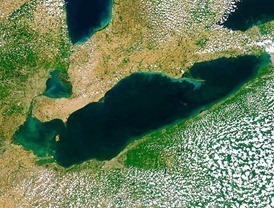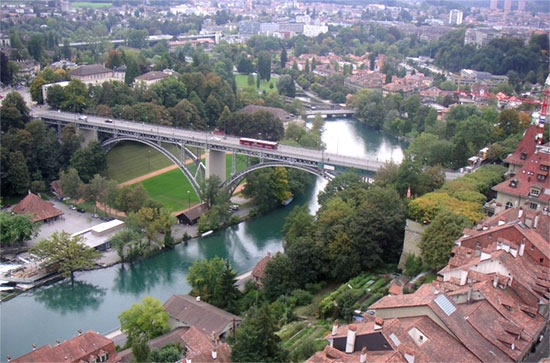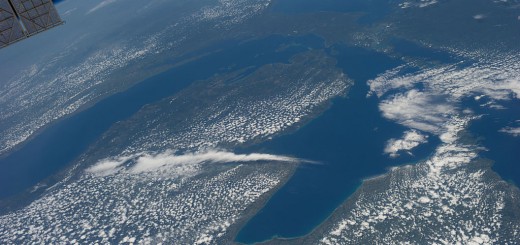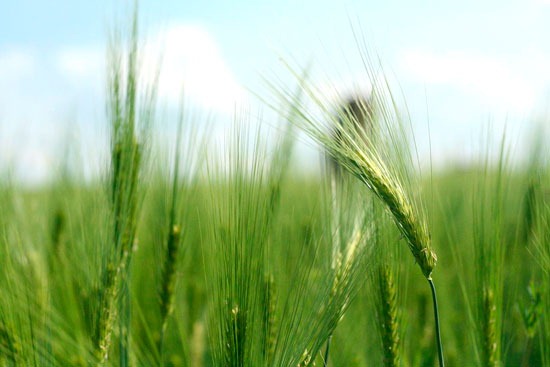Blue-green algae in Lake Erie could reach all-time high
8 This summer’s high temperatures, along with increased phosphorus loading, sewage discharges, and rainfall, have created something of a perfect storm for blue-green algae growth in Lake Erie. The lake’s western basin could have one of its worst algae outbreaks in years this summer.
This summer’s high temperatures, along with increased phosphorus loading, sewage discharges, and rainfall, have created something of a perfect storm for blue-green algae growth in Lake Erie. The lake’s western basin could have one of its worst algae outbreaks in years this summer.
As we reported last week, two of the lake’s major tributaries — the Maumee and Sandusky rivers — have been showing some of the highest-ever phosphorus levels this summer. Additionally, there have been immense combined sewer overflows from sewage plants near Detroit and Toledo, and temperatures in the Great Lakes have reached 30-year highs this summer. The result could be an all-time record algal bloom in the lake during the usual September peak, says John Hageman, manager of Ohio State University’s Stone Laboratory on Gibraltar Island, near Put-in-Bay.
“By all accounts, it looks like we’re going to have the mother of all blue-green algae counts later this summer,” Hageman said. “I expect that in early September it will be just an absolute green lake. It’s going to be like somebody just turned over a can of green paint.”
This is the third summer in a row of excessive algae in the lake, said Tom Bridgeman, a researcher at the University of Toledo’s Lake Erie Center. He added that last year was the worst he had seen during his eight years studying Lake Erie.
See local TV news coverage of Bridgeman’s research on toxic algae in the lake:
In addition to usual sampling, a blimp-like device hovering over the lake is helping Bridgeman and other researchers track the algal bloom. Called an aerostat, the unmanned system is equipped with imaging technology and tethered to a barge that is anchored a half-mile from the shore.
Controlling the sewage problem has been identified as a key priority for controlling the algae problem. Such a program in Toledo, called the Toledo Waterways Initiative, aims to end sewage overflows in the area. It will involve more than doubling the city’s sewer capacity to allow it to handle even heavy storm events without CSOs.
However, Toledo has released raw sewage into the Maumee, Ottawa River, Swan Creek, and other area streams during every month for the past year, including the winter, according to The Toledo Blade. Two recent incidents lasted more than 24 consecutive hours. In May, there were 127 Toledo-based overflows, and June had 112. Detroit is also reporting high overflows this summer.
The ODNR’s Division of Wildlife Sandusky Fish Research Unit suspects the toxic microcystis could be part of the reason Lake Erie walleye hatches have been poor in recent years. Blue-green algal blooms resurged in 1995 after 20 years of being virtually non-existent, during which walleye thrived. The last major walleye hatch in Lake Erie occurred in 2003. Hatch sizes since then have been, at best, below average. It’s unprecedented to have a six-year period of substandard spawning.
What efforts do you think are most important for controlling Lake Erie’s algal blooms? Share your thoughts in the comments below.
Record outbreak of toxic algae feared for Lake Erie after hot summer [The Toledo Blade] Blimp keeps eye on Lake Erie [The Toledo Blade] Blue Green Algae killing Lake Erie [NBC 24]














[…] as mentioned yesterday, Toledo has released raw sewage into Lake Erie tributaries during every month for the past year. In May, the city experienced 127 overflows, and Detroit hasn’t fared well this summer […]
[…] with farm runoff, the sewage problem is also considered one of the major causes of the toxic blue-green algae problem in western Lake Erie, where a record bloom next month is […]
[…] breathe, and, unlike green algae, contribute nothing to the food web. Researchers are predicting “the mother of all blue-green algae counts” in the lake this […]
[…] in recent years, and they are worsening the dead zone. In fact, 2010 could have some of the largest blue-green algal blooms, thanks to higher-than-usual water temperatures, increased phosphorus runoff, and a rising number […]
[…] dangerous type of algae is of course smothering Grand Lake St. Marys as well as reaching all-time highs in Lake Erie. Additionally, there have been several reports of blue-green algae in other Ohio […]
[…] project will focus on microcystis, the toxic algal species that have been the scourge of Lakes Erie and Ontario. This strain of blue-green algae can produce up to four liver and nerve toxins harmful […]
[…] has become an increasing threat to beachgoers and drinking water supplies, particularly in and around Lake Erie and inland lakes across the […]
[…] was the third summer in a row of excessive blue-green algae in the lake, according to Tom Bridgeman, a researcher at the University of Toledo’s Lake Erie […]